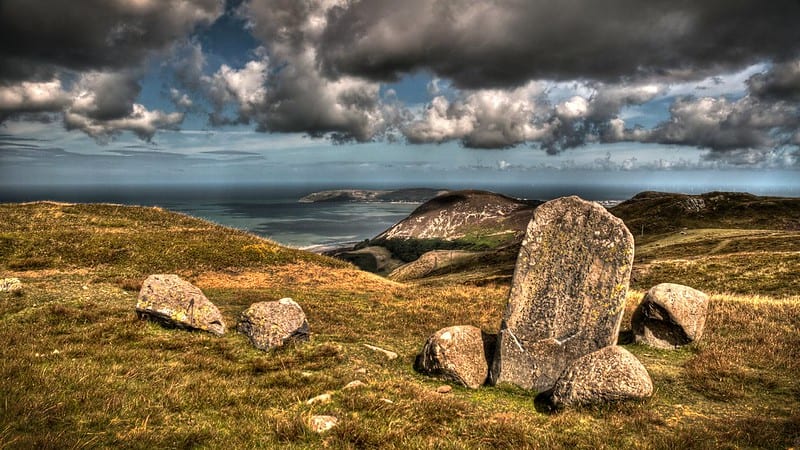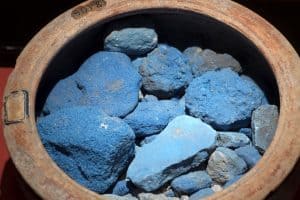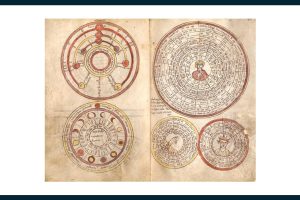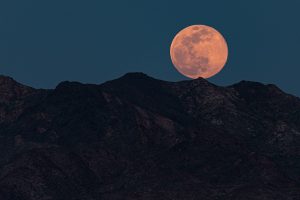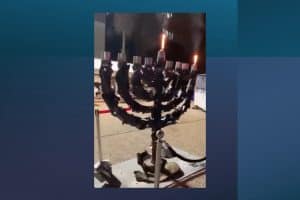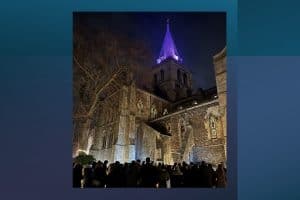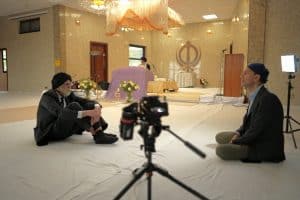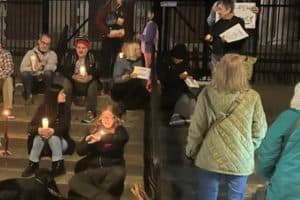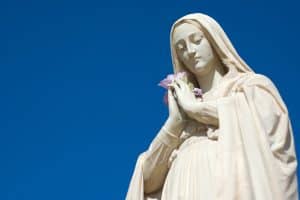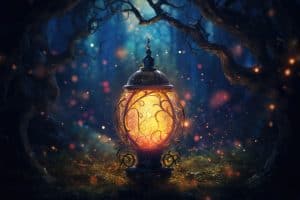As the darkness draws in and householders deck their front doors with fake cobwebs and carved pumpkins, others in Britain will be embracing a host of lesser-known traditions to celebrate the onset of winter.
Pagan communities around Britain are this week gearing up for one of the biggest events in their calendar: Samhain.
Paganism is an umbrella term for a family of religious traditions with varying practices and rituals. Among them are Wicca, witchcraft, Druidry and heathenism.
For many of these traditions, Samhain is an important festival as it marks the new year and a time to remember the Ancestors, recent and ancient, with gratitude and honour. It usually takes place between the last few days of October and first few days of November.
Samhain — pronounced sah-wen — means summer’s end. It is the last of three ancient harvest festivals, celebrated by the Celtic nations of Britain and probably dating back to pre-Christian times.
It is also traditionally the time when animals were slaughtered so that they did not have to be kept over winter, and their meat could be used as a valuable reserve, according to Jenny Uzzell, a Druid who runs a progressive funeral home with her partner in Darlington. She is also doing a PhD at Durham University researching modern British Druidry and death rituals.
While many believe that the Christian festival Halloween is derived from the Pagan Samhain, it is actually the other way round, she said.
“While Samhain is certainly an ancient festival, there is no evidence that the Pagan Celts associated it with the dead or with veneration of the Ancestors. The association with the dead came from a Catholic festival to honour the martyrs and the saints’ All Hallows’ Eve — which became Halloween and slowly took on the eerie feel that it has today. Paganism has adopted it and made it into a major festival to honour the dead and the Ancestors.”
The festival usually involves a celebratory meal called a “dumb supper” and this is often eaten in silence in reverse order, starting with dessert. The ancient Celts seem to have associated reversing things with the Otherworld, so for many Pagans this is a way to connect with the dead.
A place is set for the honoured dead who are invited to join the group for a meal. At the end a bell is rung, the conversation resumes and it turns into a party.
“There’s absolutely nothing spooky or morbid or malign about it. It’s purely a case of honouring your Ancestors, because if it hadn’t been for them, you wouldn’t be here,” she said.
“There’s absolutely nothing spooky or morbid or malign about it. It’s purely a case of honouring your Ancestors, because if it hadn’t been for them, you wouldn’t be here”
– Jenny Uzzell
Samhain is also a fire festival, so there are bonfires and fireworks as well. Celebrations at this time would often involve a small ceremony at home, perhaps followed by small offerings of food or drink. Many people would also put up photographs of their forebears on their altar.
Another practice that has become closely linked to Samhain is the Mari Lwyd, meaning “white mare”, a tradition originally from South Wales probably in late 19th-century Wales. It was beginning to die out, but now is becoming increasingly popular.
A decorated horse skull is attached to a pole with a mechanism to make the jaws snap, then it is draped with a white cloth to hide the person operating it. The finished product is the Mari.
She is carried from door to door and from inn to inn in the dark part of the year demanding entry, accompanied by a rowdy group of followers, one of whom is the “Ostler”, who handles and speaks for her.
There follows a poetic battle of wits known as a pwnco, which the Mari and her rowdy group would inevitably win, at which point they would be invited in and given food and drink in return for blessings for the new year.
If the inhabitants win, the revellers move on. If not, the door is opened and the Mari enters, causing havoc, snapping at the people within, galloping around in a spirit of mischief and chaos.
Although there is no evidence that the Mari Lwyd is ancient, or was ever associated with pre-Christian religion, she is enjoying a new lease of life and can be seen at various Pagan and folk events from Samhain until February.
She is seen as a guardian of the dark half of the year, and as a psychopomp, who conducts the souls of the dead safely to the Otherworld. She also represents the spirit of mischief and chaos, although she brings blessings and good fortune to each house or inn that she visits.
One popular event where you can see many Maris at this time of year is “the Dark Gathering”, a large public celebration of Samhain that will be returning this year after being on hold during the pandemic.
Visitors from all over the country flock to the grounds of the Museum of Witchcraft and Magic in Boscastle, Cornwall, for what essentially becomes a huge party and bonfire.
“It’s a celebration of the Ancestors and creating a connection between the living and the dead and honouring the Ancestors with performances, poetry, songs and Morris dancers,” Ms Uzzell said.
Another popular folk celebration at this time of year is the Samhuinn Fire Festival at Holyrood Park, Edinburgh, on Monday, 31 October. The Beltane Fire Society promises “dazzling fire-play, acrobatics and drums as an epic battle between winter and summer unfolds”.
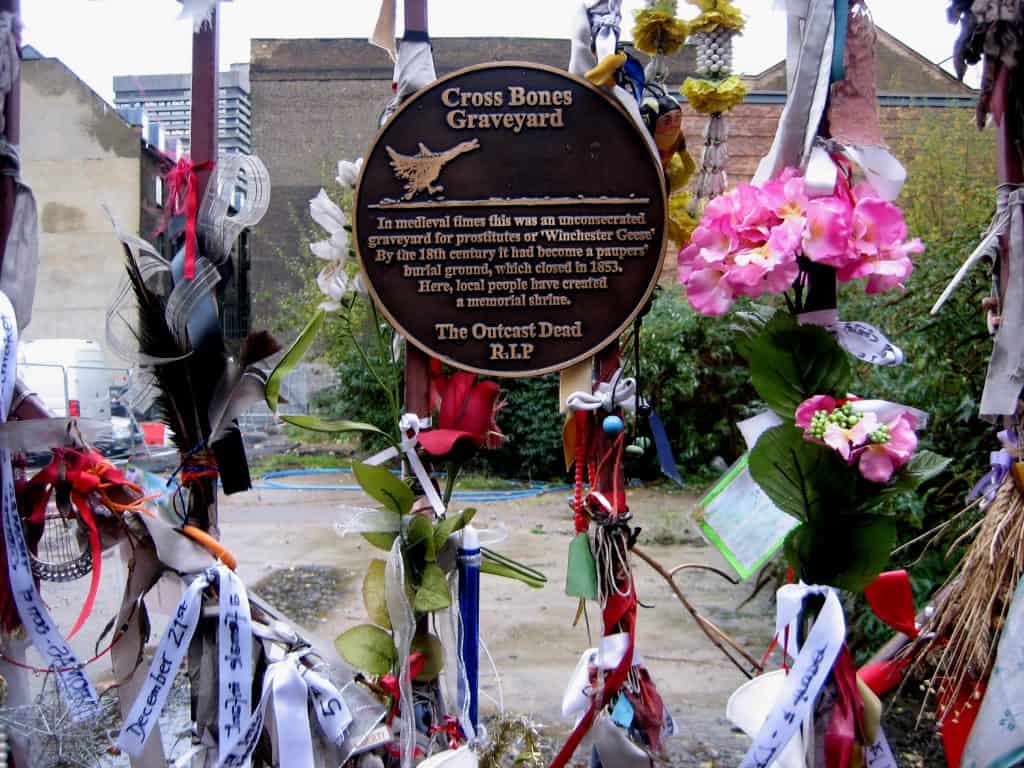
London was formerly host to a regular celebration at Crossbones Graveyard in Southwark. For centuries the site was a paupers’ cemetery in one of London’s worst slums. An estimated 15,000 are estimated to have been buried there before it shut in 1853.
Archaeologists discovered the site during work on the Jubilee Line extension in the 1990s. It was later transformed as a shrine and garden of remembrance.
A ritual drama called the Halloween of Cross Bone Yards honoured the spirits of the outcast dead for several years, culminating with a candlelit procession. There was an altar to Ancestors and food was left for the hungry ghosts.
“Like a lot of these things there were many Pagans involved in it, but it was by no means exclusively Pagan,” Ms Uzzell said. “It was very much a folk religion outpouring. It’s a grassroots thing that came from the community but is about the connection with the dead.”

